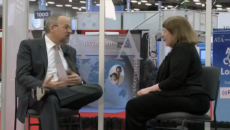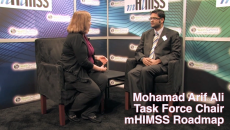Telehealth
We're in the middle of a long, 50-year cycle of telemedicine, says incoming ATA president Edward Brown, MD, CEO of Ontario Telemedicine Network.
Not everyone is eager to see the U.S. Food and Drug Administration issue its final guidance on mobile medical app regulation. In fact, some are wondering if the FDA is even the right agency to take charge of mHealth oversight.
Many hospitals and health systems are increasingly frustrated with the inaccurate contact information that turns up in Google searches for their facilities. But they're even more annoyed with the unwieldy and often ineffective process required to correct it.
A 16-year-old boy in Bulgaria is helping some of MIT's smartest minds to map the human brain -- by playing an online game. And someday, that work might be used to solve the mysteries of Alzheimer's or Parkinson's disease. He's the top "scorer" in the game, in which participants map connections between retinal neurons to develop a 3-D portrait of a single cell.
Ali, chair of the mHIMSS Roadmap Task Force, compares our modern mHealth momentum to the tech boom of the 1990s and talks about how the mHIMSS Roadmap will help providers, payers and other healthcare stakeholders understand the opportunities presented by mHealth.
ONC has a real understanding of the importance of consumer engagement, the head of the ONC's Office of Consumer eHealth, says. When ONC was originally created and even when HITECH passed, there was a lot of emphasis on providers and hospitals. But it's only in more recent years that it's become more generally understood that patients and consumers play a critical role, too.
There's an app for the Mexican restaurant chain Chipotle that lets users order a custom burrito and prepay for it, so it's ready when they arrive to pick it up. At one Houston-area hospital Harry Greenspun visited recently, patients can use that Chipotle app, he said, they just can't access their healthcare information. That got Greenspun talking about transformation.
The Center for Connected Health and the Center for Technology and Aging have launched a new tool to gauge the return on investment for remote patient monitoring technologies for patients with heart disease.
Healthcare providers are taking telemedicine to new heights, with the market seeing growth of a whopping 237 percent within a five year period, according to a new Kalorama report.
A new KLAS report, its first on ambulatory electronic medical record usability, finds that success in achieving high usability ranges from 85 percent to 55 percent. Of the EMR vendors reviewed, athenahealth ranked No. 1.

